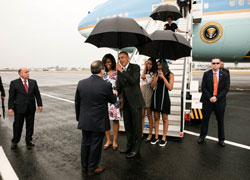 AFFIRMATIVE
AFFIRMATIVE
In the wake of several campus shootings, the most deadly being the 2007 shooting at Virginia Tech University, states are increasingly considering legislation about whether or not to permit guns on college campuses.
For some, these events point to a need to ease existing firearm regulations and allow concealed weapons on campuses. Others see the solution in tightening restrictions to keep guns off campuses.
In 2013, at least 19 states introduced legislation to allow concealed carry on campus in some regard and in the 2014 legislative session, at least 14 states followed up and introduced similar legislation.
In 2013, two bills passed, one in Kansas that allows concealed carry generally and one in Arkansas that allows faculty to carry.
At the University of Colorado at Boulder, a dormitory was commissioned for students who wished to covertly carry their guns around on campus by day and safely tuck them into a safe in their room at night.
In 2015, Texas became the most recent state to allow concealed carry weapons on college campuses.
On the other hand, recent shootings also have encouraged some legislators to strengthen existing firearm regulations.
In 2013, five states introduced legislation to prohibit concealed carry weapons on campus. None of these bills passed.
Currently, all 50 states allow citizens to carry concealed weapons if they meet certain state requirements.
There are only 19 states however, that ban carrying a concealed weapon on a public college campus: CA, FL, GA, IL, LA, MA, MI, MO, NE, NJ, NM, NY, NC, ND, OH, SC, TN, WY.
Gun rights advocates will drill the phrase “Guns don’t kill people, people kill people,” without consideration to how easily a shooter’s wrath could be indiscriminately unleashed with multiple extended magazines or how simply it could be cloaked with a handgun and a concealed weapons permit.
The idea that one good student with a concealed weapon would be able to counter and neutralize an aggravated shooter is perpetuated in the legislative support for an increased prevalence of guns on campuses and in other public places too.
Little regard is ever afforded to the victims of any shooting scenario possibly made worse by the introduction of another shooter to the situation.
A hero gunman in this case could be likened to throwing gasoline on a fire as the heat of the moment decisions they make could antagonize the aggravated gunman and result in greater loss of life.
Our instinctual fight-or-flight response is governed by the sympathetic nervous system. Its opposite, the parasympathetic nervous system, ultimately permits our reasoning to take over again.
The decisions we make while governed solely by our unreliable sympathetic nervous system are not based in reason but on pure instinct. It takes many years of training for police officers and soldiers to learn to tame this instinct and use their reasoning minds during any shooting situation.
No relative training is required to be permitted a license to carry a concealed weapon in any state.
The reasoning for legislative defenses of our perceived Second Amendment rights is a classic example of another phrase “fight fire with fire,” in that the idea is more guns would safeguard us from gun violence, and has no basis in logic or science.
NEGATIVE
The nation went into mourning last week when they heard the news about the shooting that occurred on the campus of Umpqua Community College in Oregon.
Like the many other shootings, the reaction is to bring up the topic of gun control. All though that seems like the only option, it is not. What people do not realize is that there are dozens of other factors that contribute to a shooting than just the guns.
First off, assuming that guns are the only problem is like assuming that a car is to blame for a deadly accident. When a car accident occurs, many different scenarios and causes are investigated.
Was the driver impaired, distracted, or licensed? Is there a pattern of accidents on that particular road? These are some of the many things that can be thought of during an accident besides just the car itself. Why isn’t the same logic used for shootings?
According to last week’s Outlook issue, there has been 143 school shootings since 2013. So instead of just looking into the guns, why don’t we look into the schools?
According to the Heritage Foundation, the number of mass shootings peaked in 1929 and has been level ever since. On the larger scale, mass shootings are down in society. The only place that they have raised is in schools. What do most schools have in common? They are all gun free zones.
No I am not suggesting that we all carry guns on campus like it’s the Wild West. However, if you were to go into a house with a gun and rob a family, whose home would you rather break into? The house with a sign in the front yard that calls for gun control and states that the home is gun free, or the house with a National Rifle Association sign that says they support the Second Amendment?
I, for one, would much rather break into the house that was gun free.
Taking away the rights of responsible and legal gun owners to defend themselves is not the answer to this problem. This will only get guns into the wrong hands and away from the responsible owners.
If our country were to ban guns, it would see the same results as it did by making drugs illegal. People still do drugs, and now there is a market where criminals can make money off of illegal activity.
If our country were to ban guns, there would become an illegal market for guns and those criminals would just get paid for it.
Neither of the extremes are right in this argument. Something has to be done about this problem, but it would be naïve to think that the only factor that plays into this is the guns themselves.
DISCLAIMER: The opinions expressed in this debate article are that of the writers only.
IMAGE TAKEN from truthinmedia.com



